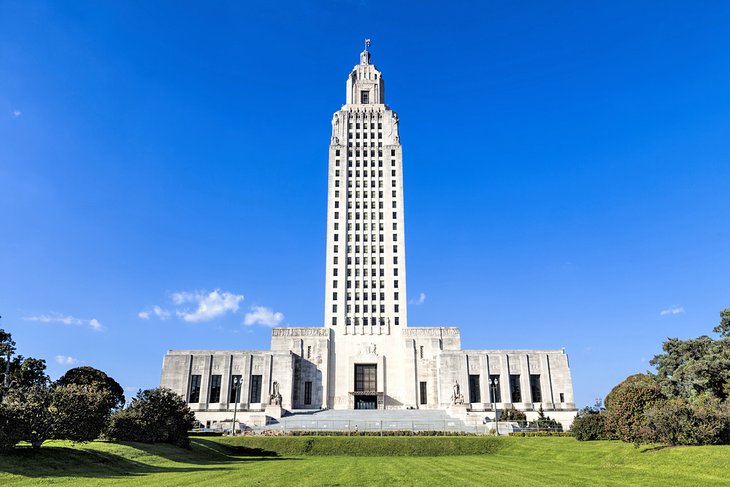aton Rouge, Louisiana, may be known for its vibrant culture, southern charm, and festive atmosphere, but beneath the surface, it holds a treasure trove of hidden gems perfect for curious travelers. Whether you’re looking to step back in time, immerse yourself in local culture, or explore unique landscapes, these seven secret spots should be on your radar when visiting Baton Rouge this September.
1. Magnolia Mound Plantation: A Glimpse into Antebellum Life
Magnolia Mound is a French Creole plantation house dating back to the 18th century. This hidden gem offers visitors an intimate glimpse into life during Louisiana’s antebellum era. Spread across 16 acres, the historic site features beautifully preserved buildings, including a rare cabin used by enslaved families, and period furnishings that take you back to another time. Magnolia Mound’s serene gardens are perfect for a quiet afternoon, providing a peaceful contrast to the city’s bustling streets.
2. The LSU Hilltop Arboretum: A Natural Retreat
Tucked away on Highland Road, the LSU Hilltop Arboretum is a serene 14-acre botanical garden dedicated to native Louisiana plants. This hidden gem is perfect for nature lovers and those seeking solitude amidst a variety of landscapes, from lush oak trees to peaceful ponds. September is a wonderful time to visit as the gardens begin to transition into fall, with many plants still in full bloom. The arboretum offers walking trails that allow you to explore at your own pace.
3. Bluebonnet Swamp Nature Center: A Hidden Oasis
Escape into nature without leaving the city at the Bluebonnet Swamp Nature Center, a lesser-known yet fascinating 103-acre reserve. This hidden oasis offers walking trails through diverse habitats, from swamplands to hardwood forests. Wildlife enthusiasts will appreciate the chance to see local species like alligators, birds, and turtles in their natural environment. The center’s indoor exhibits provide insights into the region’s ecosystems, making it an educational and immersive experience.
4. Spanish Town: A Colorful Slice of History
Often overshadowed by the city’s larger attractions, Spanish Town is Baton Rouge’s oldest neighborhood, and it’s brimming with quirky charm. Known for its vibrant architecture and artistic community, this neighborhood plays host to Baton Rouge’s most famous Mardi Gras parade each February, but even outside of the carnival season, it’s worth a visit. Wander through its streets to find colorful homes, murals, and offbeat shops. September is a quieter time to explore Spanish Town’s historic streets without the Mardi Gras crowds.
5. The Old Arsenal Museum: Military History Unveiled
Nestled within the grounds of the Louisiana State Capitol, the Old Arsenal Museum is often overlooked by visitors. The small, historic structure once served as a military arsenal during the 19th century. Its collection of artifacts, including weapons, uniforms, and historical documents, offers a window into Louisiana’s military history, including its involvement in the Civil War. Visiting the museum in September provides a calm and reflective atmosphere to explore this piece of history away from the typical tourist routes.
6. Knock Knock Children’s Museum: A Family-Friendly Secret
For families traveling with young children, the Knock Knock Children’s Museum is a must-visit hidden gem. Located on Knock Knock Hill overlooking City-Brooks Community Park, this museum offers interactive exhibits and learning zones designed to engage young minds. From the Go Go Garage, where kids can pretend to be mechanics, to the Story Tree, which fosters imagination, the museum encourages hands-on learning. September is a great time to visit as the weather cools down, offering both indoor and outdoor fun for families.
7. Rural Life Museum: Louisiana’s Agricultural Heritage
On the grounds of LSU, the Rural Life Museum is a hidden gem that transports visitors to 19th-century Louisiana. The open-air museum features historic buildings like a plantation overseer’s house, a blacksmith shop, and even a country church, all relocated from rural Louisiana. These buildings, along with the artifacts on display, offer a tangible connection to the state’s agricultural past. The museum also showcases demonstrations of traditional crafts like weaving and pottery, making it a fascinating cultural experience.
Conclusion
While Baton Rouge may be celebrated for its lively festivals and sports culture, it’s the city’s hidden treasures that often leave the most lasting impressions. From historic plantations and military museums to serene nature reserves and colorful neighborhoods, these secret spots offer a deeper, more intimate look at the culture, history, and beauty of Louisiana’s capital. September is the perfect time to explore Baton Rouge’s lesser-known attractions, whether you’re a history buff, nature lover, or simply a curious traveler looking to uncover the city’s secrets.
